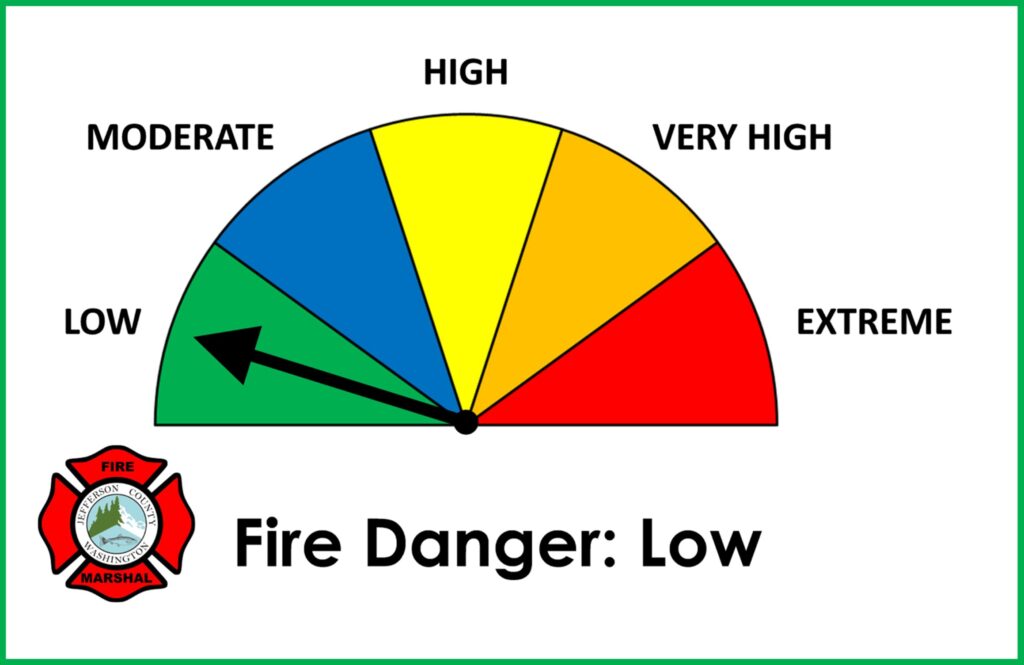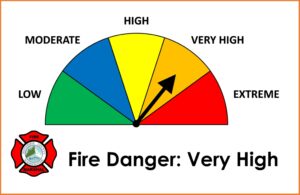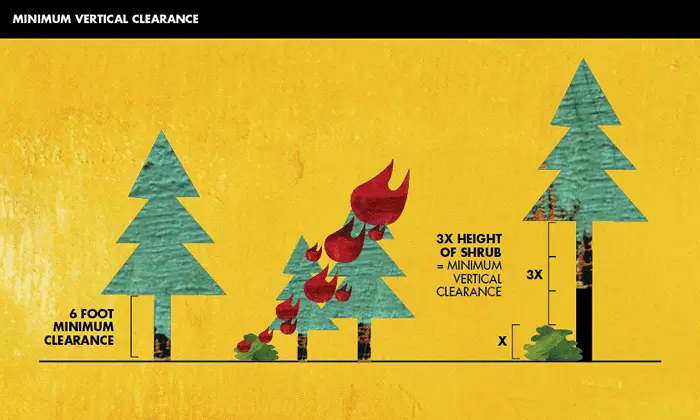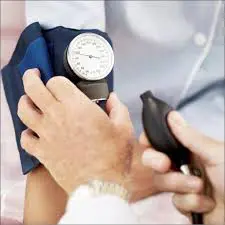Winter and Holiday Fire Safety Tips
Our cooling weather brings with it a reminder that winter months are the most dangerous for fires and injuries. Please play it safe by taking time to review the following home safety tips:
Carbon Monoxide
When using home heating appliances, be aware of the dangers of carbon monoxide. Carbon monoxide (CO), often called “the silent killer,” is an invisible, odorless, colorless gas created when fuels (such as kerosene, gasoline, wood, coal, natural gas, propane, oil and methane) burn incompletely. It can result from faulty furnaces or other heating appliances, portable generators, water heaters, clothes dryers, or cars left running in garages.
Symptoms of carbon monoxide (CO) poisoning may include headache, nausea and drowsiness. Extremely high levels of poisoning can be fatal, causing death within minutes.
It’s recommended that you install and maintain CO alarms inside your home.
To reduce the risk of carbon monoxide, have your fuel-burning heating equipment (fireplaces, furnaces, water heaters, wood stoves, coal stoves, space heaters and portable heaters, as well as chimneys inspected by a professional every year. Also, be sure to open the damper for proper ventilation before using a fireplace. Never use your oven or stovetop to heat your home.
During and after a snowstorm, make sure vents for the dryer, furnace, stove, and fireplace are clear of snow build-up.
Bad weather can bring with it intermittent power outages. For those of you with portable generators, use them outdoors in well-ventilated areas away from all doors, windows, vents and other building openings to prevent exhaust fumes from entering the home.
The following information, developed by the American Red Cross with technical advice from the Centers for Disease Control and Prevention, the National Fire Protection Association(publisher of the National Electric Code®) and the U. S. Consumer Product Safety Commission, is provided to address questions about using a generator when disaster or emergency strikes.
How to Buy a Generator
If you choose to buy a generator, make sure you get one that is rated for the amount of power that you think you will need. Look at the labels on lighting, appliances, and equipment you plan to connect to the generator to determine the amount of power that will be needed to operate the equipment.
For lighting, the wattage of the light bulb indicates the power needed. Appliances and equipment usually have labels indicating power requirements on them. Choose a generator that produces more power than will be drawn by the combination of lighting, appliances, and equipment you plan to connect to the generator including the initial surge when it is turned on. If your generator does not produce adequate power for all your needs, plan to stagger the operating times for various equipment.
If you can not determine the amount of power that will be needed, ask an electrician to determine that for you. (If your equipment draws more power than the generator can produce, then you may blow a fuse on the generator or damage the connected equipment.)
How to Use a Generator at Home
The primary hazards to avoid when using a generator are carbon monoxide (CO) poisoning from the toxic engine exhaust, electric shock or electrocution, and fire. Follow the directions supplied with the generator. Every year, people die in incidents related to portable generator use.
Never Use a Portable Generator Indoors! This includes inside a garage, carport, basement, crawlspace, or other enclosed or partially-enclosed area, even with ventilation. Opening doors and windows or using fans will not prevent CO buildup in the home. The CO from generators can rapidly lead to full incapacitation and death, but CO can’t be seen or smelled. Even if you cannot smell exhaust fumes, you may still be exposed to CO. If you start to feel sick, dizzy, or weak while using a generator, get to fresh air RIGHT AWAY – DO NOT DELAY.
Because you may have windows open to get fresh air while the power is out, be sure to place the generator away from windows, doors, and vents that could allow CO to come indoors. To avoid electrocution, keep the generator dry and do not use in rain or wet conditions. To protect the generator from moisture, operate it on a dry surface under an open canopy-like structure, such as under a tarp held up on poles. Do not touch the generator with wet hands.
It is a good idea to install battery-operated CO alarms or plug-in CO alarms with battery back-up in your home, according to the manufacturer’s installation instructions. If CO gas from the generator enters your home and poses a health risk, the alarm will sound to warn you. Test the battery frequently and replace when needed.
Be sure to turn the generator off and let it cool down before refueling. Gasoline spilled on hot engine parts could ignite.
Store fuel for the generator in an approved safety can. Use the type of fuel recommended in the instructions or on the label on the generator. Local laws may restrict the amount of fuel you may store, or the storage location. Ask your local fire department for additional information about local regulations. Store the fuel outside of living areas in a locked shed or other protected area. Do not store it near a fuel-burning appliance, such as a natural gas water heater in a garage. If the fuel is spilled or the container is not sealed properly, invisible vapors from the fuel can travel along the ground and can be ignited by the appliance’s pilot light or by arcs from electric switches in the appliance.
Plug appliances directly into the generator. Or, use a heavy duty, outdoor-rated extension cord that is rated (in watts or amps) at least equal to the sum of the connected appliance loads. Check that the entire cord is free of cuts or tears and that the plug has all three prongs, especially a grounding pin.
Never try to power the house wiring by plugging the generator into a wall outlet, a practice known as “backfeeding.” This is an extremely dangerous practice that presents an electrocution risk to utility workers and neighbors served by the same utility transformer. It also bypasses some of the built-in household protection devices.
Future Generator Safety Considerations
The only recommended method to connect a generator to house wiring is by having a qualified electrician install a power transfer switch. This switch must be installed in accordance with the National Electrical Code® (NEC), which is published by the National Fire Protection Association, as well as all applicable state and local electrical codes. Call a qualified electrician or check with your utility company to see if they can install the appropriate equipment.
For power outages, permanently installed stationary generators are better suited for providing backup power to the home. Even a properly connected portable generator can become overloaded. This may result in overheating or stressing the generator components, possibly leading to a generator failure. Be sure to read instructions that come with the generator to make sure you operate it within its limitations for power output.
For wood-burning fireplaces, have a sturdy metal screen in front. Burn only dry, seasoned wood. Not only is it cleaner for the environment, it also creates less buildup in the chimney.
Use artificial logs according to the manufacturer’s recommendations. Never burn more than one log at a time. Use only newspaper and kindling wood or fire starters to start a fire. Never use flammable liquids, such as lighter fluid, kerosene or gasoline to start a fire.
Chimneys and vents need to be cleaned and inspected at least once a year.
Local Chimney Cleaning Services*
- A+ Services: 360.620.9990
- Fire Pro: 360.452.1153
*EJFR does not endorse or recommend any of the above services over another. We have confirmed that the above options service our District.
Don’t forget that underrated element—common sense. If it seems risky or dangerous, it probably is. Be careful and have a happy and safe winter.
Fire in the grill, under hot dogs and burgers, is a welcome sight at the family cookout. But fire anywhere else can make your summer kick-off barbecue memorable for all the wrong reasons.
- Propane and charcoal BBQ grills should only be used outdoors.
- The grill should be placed well away from the home, deck railings and out from under eaves and overhanging branches.
- Keep children and pets away from the grill area.
- Keep your grill clean by removing grease or fat buildup from the grills and in trays below the grill.
- Never leave your grill unattended.
Charcoal grills
- There are several ways to get the charcoal ready to use. Charcoal chimney starters allow you to start the charcoal using newspaper as a fuel.
- If you use a starter fluid, use only charcoal starter fluid. Never add charcoal fluid or any other flammable liquids to the fire.
- Keep charcoal fluid out of the reach of children and away from heat sources.
- There are also electric charcoal starters, which do not use fire. Be sure to use an extension cord for outdoor use.
- When you are finished grilling, let the coals completely cool before disposing in a metal container.
Propane grills
Check the gas tank hose for leaks before using it for the first time each year. Apply a light soap and water solution to the hose. A propane leak will release bubbles. If your grill has a gas leak, by smell or the soapy bubble test, and there is no flame, turn off the gas tank and grill. If the leak stops, get the grill serviced by a professional before using it again. If the leak does not stop, call the fire department. If you smell gas while cooking, immediately get away from the grill and call the fire department. Do not move the grill.
More grilling safety tips from the NFPA.
Independence Day (4th of July) Safety
Fireworks Safety Tips
Using consumer fireworks on our nation’s birthday is as traditional as cookouts and parades. However, Independence Day celebrations also bring fires and injuries due to misuse of fireworks.
East Jefferson Fire Rescue, along with the Office of the State Fire Marshal and local law enforcement agencies urges Jefferson County residents and visitors to use caution when purchasing and using fireworks outside Port Townsend city limits. Use of fireworks within Port Townsend city limits is banned. Possession or discharge of any fireworks is illegal within city limits.
Legal fireworks suitable for use in unrestricted areas of Jefferson County include the following: cylindrical fountains, helicopters and aerial spinners, cone fountains, smoke devices, Roman candles, parachutes, wheels, mine/shells/cakes, ground spinners, reloadable mortars, dipped sticks/sparklers and novelties.
Federally Legal Consumer Fireworks
These items are legal to purchase, possess and discharge only on a Native American Reservation. Possession and/or use off the reservation is illegal: firecrackers (generally ¼” x 1-1/2” or less), sky rockets and missiles and bottle rockets.
The possession, manufacturing or use of illegal explosive devices is a criminal offense. These include, but are not limited to: M-80s and M-100s, Improvised Explosive Devices (IED) which include pipe bombs and tennis ball bombs, and altered fireworks such as sparklers bound tightly together to create an explosion.
The National Council on Fireworks Safety recommends that you only buy consumer fireworks from a licensed store, tent or stand. Never buy fireworks from an individual’s house or from someone on the street. Such devices are likely to be illegal explosives or professional 1.3G fireworks that can seriously injure you.
RCW 70.77 states that the ignition of fireworks is allowable between the following dates and times:
June 28: Between noon and 11 p.m.
June 29 – July 3: Between 9 a.m. and 11 p.m.
July 4: Between 9 a.m. and 12 a.m.
July 5: Between 9 a.m. and 11 p.m.
Please use care in the purchase and discharge of fireworks. Do not light them indoors or near dry grass. Always have a bucket of water and/or fire extinguisher nearby. Wear snug clothing while using fireworks. If a device fails to go off properly, do not stand over it to investigate it or try to relight it. Wait at least 15 minutes before placing it in a bucket of water.
Have a safe and happy Independence Day!




















